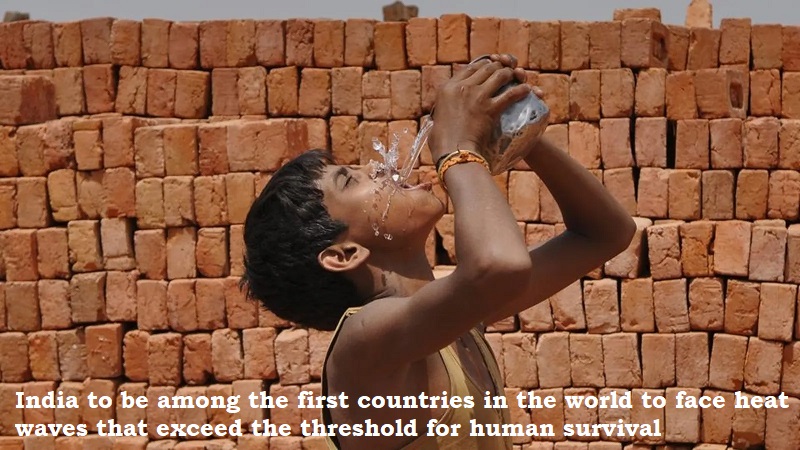
Over the past few decades, climate change has brought significant heat waves to India, and according to a World Bank report titled ‘Climate Investment Opportunities in India’s Cooling Sector,’ India may soon face heat waves that exceed the threshold for human survival. The report suggests that India’s wet-bulb temperatures, an indicator that combines the relative humidity and temperature of the air to offer a more precise measurement of heat stress on the human body, rarely rise beyond 32°C even during the greatest heat waves. However, climate models indicate that these temperatures could exceed the survivability threshold of 35°C at a few locations in the Northern parts, and large areas of South Asia are likely to experience temperatures higher than 31°C, which is extremely dangerous for most humans.
The report also notes that without focused adaptation measures that give access to sustainable cooling, as many as 160-200 million people in India might be vulnerable to deadly heat waves by 2030. The need for cooling is anticipated to increase by eight times by 2037, resulting in a new air conditioner being needed every 15 seconds, which will increase yearly greenhouse gas emissions by 435 percent over the next two decades if carbon emissions stay high.
The G20 Climate Risk Atlas predicts that if carbon emissions continue to rise, heat waves in India will last 25 times longer by 2036–2065. India’s rising temperatures will increase demand for cooling. However, a recent World Bank report suggests that keeping spaces cool by 2040 could create an investment opportunity worth $1.6 trillion, generate nearly 3.7 million jobs, and significantly lower greenhouse gas emissions.
According to the report, ‘India’s cooling strategy can help save lives and livelihoods, reduce carbon emissions and simultaneously position India as a global hub for green cooling manufacturing.’ The report outlines a sustainable roadmap for cooling that has the potential to reduce 300 million tons of carbon dioxide annually by 2040. Overall, it is clear that nationwide temperatures have been rising at worrisome rates in recent years, and urgent action is needed to mitigate the impacts of climate change on India’s population.

Post Your Comments